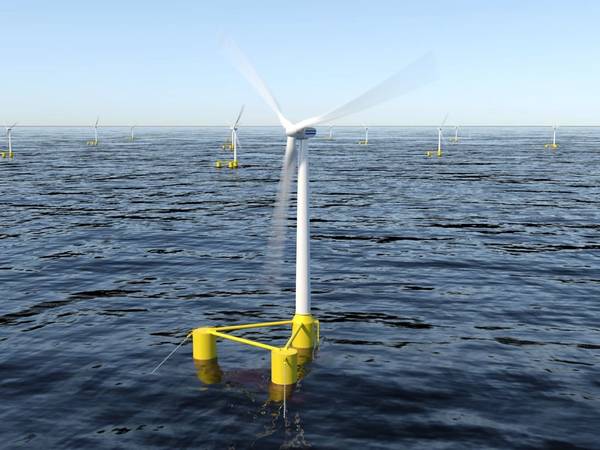
American Bureau of Shipping (ABS) has granted Approval in Principle (AIP) to Bassoe Technology for its T-Floater floating wind turbine foundation design. The foundation is designed to carry a 10 MW turbine in the harsh conditions of the North Sea.
With three columns and T-shaped pontoons to allow transport of multiple T-Floater hulls on a dry tow vessel or alternatively in modules for in-water assembly, the design is intended to operate with a tow-out draft of only eight meters with the turbine installed. This facilitates flexibility in assembly port selection allowing quayside installation of the tower and turbine close to the wind farm, ABS said.
Greg Lennon, ABS Vice President, Global Offshore Wind said: "ABS has supported on delivering more than 80MW of pioneering floating wind turbine projects to the market. It is great to be able to use this experience to support new innovation in the market, such as this novel design from Bassoe Technology. We are committed to supporting the offshore wind supply chain through project designs that support new approaches to improving deployment processes and managing risks such as the T-Floater. From design to construction to operations, our international team strength adds value to projects." Credit: ABSJoakim Nilsson, Managing Director, Bassoe Technology said:"The T-Floater has been designed to meet the demand for industrialization and effective logistic solutions for floating wind. The ability to transport up to six completed 15 MW T-Floaters on a single dry tow vessel will allow for cost-efficient construction and transportation.
Credit: ABSJoakim Nilsson, Managing Director, Bassoe Technology said:"The T-Floater has been designed to meet the demand for industrialization and effective logistic solutions for floating wind. The ability to transport up to six completed 15 MW T-Floaters on a single dry tow vessel will allow for cost-efficient construction and transportation.
Together with our parent company, CIMC Raffles, we will have the ability to deliver more than 50 T-Floaters per year but we will also, due to the in-water assembly possibility, be able to work together with local shipyards with limited width of dry-docks/slip-ways to meet local content requirements. Having experience designing oil & gas semi-submersibles to ABS approval, we appreciated the opportunity to expand our cooperation with ABS into floating wind,” said
ABS' AIP verifies that the design is feasible for the intended application and, in principle, complies with the applicable requirements of the ABS Guide for Building and Classing Floating Offshore Wind Turbine Installations. When constructed, the units will qualify for the ABS Class notations ✠A1, Offshore Wind Turbine (Floating), (S), Central North Sea, and FL(25).
ABS has classed the world's largest floating offshore wind farm, Kincardine. The 50MW project, approximately 15km off the southeast coast of Aberdeenshire, at water depths ranging between 60m to 80m, is expected to generate up to 218GWh of clean electricity a year, which will be enough to power approximately 55,000 Scottish households.